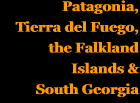 |
||||||||||||||||||||||||||||||||||||||||||||||||||||||||||||||||||||||||||||||||||||||||||||||||||||||||||||||||||||||||||||||||||||||||||||||||||||||
 |
||||||||||||||||||||||||||||||||||||||||||||||||||||||||||||||||||||||||||||||||||||||||||||||||||||||||||||||||||||||||||||||||||||||||||||||||||||||
 |
||||||||||||||||||||||||||||||||||||||||||||||||||||||||||||||||||||||||||||||||||||||||||||||||||||||||||||||||||||||||||||||||||||||||||||||||||||||
 |
||||||||||||||||||||||||||||||||||||||||||||||||||||||||||||||||||||||||||||||||||||||||||||||||||||||||||||||||||||||||||||||||||||||||||||||||||||||
Appendix 12A 1957 FC Patagónico report part A This is a very long report which has here been divided into sections to ease download times. Click on the section you require.
A
ANALISIS SOBRE UNION LINEA FERROCARRIL GENERAL ROCA ------------------------------------------- TRAZADO VIAS DEL FERROCARRIL PATAGONICO El Ferrocarril Patagónico se encuentra integrado por sus tres líneas: Puerto Madryn a Alto de Las Plumas con 241/500 kilómetros de vía general, más su ramal de Trelew a Playa Unión y el que sirve al Dique Florentino Ameghino; la de Comodoro Rivadavia a Sarmiento con 197/300 y su ramal a Comferpet y Astra y Puerto Deseado a Colonia las Heras con 283 kilómetros de extensión.- Las tres nacen en la costa Atlántica donde en sus cabaceras poseen puertos, para terminar, en dirección oeste, en el centro del territorio.- La de Puerto Madryn a los 70 kilómetros entra en el valle que forma el río Chubut, tocando la importante ciudad de Trelew, Rawson, la Capital del Territorio por intermedio de su ramal y con la general, los pueblos de Gaiman y Dolavon saliendo del valle en Km. 125 recorriendo hasta Alto de Las Plumas por la región característica de la Patagonia.- La de Comodoro Rivadavia cruza centros poblados como Talleres a los 6 kilómetros - con su ramal Astra y Comferpet - siguiendo por zonas excentos de vegetación hasta Colhue Huapí Km.180 donde entra en un valle fertil hasta Sarmiento, su terminal.- La de Puerto Deseado a Colonia Las Heras sin mayores variantes y tocando pequeñas poblaciones como Jaramillo, Pico Truncado llega a punta rieles todo por zona árida y con la particularidad de correr aproximadente 200 kilómetros paralelamente a las costas del Golfo de San Jorge.- DESENVOLVIMIENTO DE LAS LINEAS: Teniendo en cuenta que la producción de le zona de influencia del Ferrocarril debe concentrarse en la Capital Federal o Bahía Blanca para su comercialización y que en sentido contrario las mercaderias generales deben observar el giro a la inversa y que las tres líneas son inconexas entre sí, surge que irremisiblemente debemos contar con el nexo de enlace y éste se logra por intermedio de la vía marítima ya que por la terrestre somos competidos fuertemente por el camión.- Pero aquella, a la cual nos vemos obligados a recurrir por tratarse de la única que resulta los intereses del ferrocarril, tiene inconvenientes derivados de un transporte que ha sido superado en muchos aspectos por el carretero y los que no dejan de repercutir directamente dentro de nuestros tráficos de cargas porque significamos la terminación o iniciación, segun el caso, del transporte combinado.- Es así que, paulatinamente y cada vez con mayor intensidad se vé la infiltración del camión que en viajes directos desde le Capital Federal o otros centros comerciales incursionan en la zona de influencia del ferrocarril aprovechando los intersticios que deja nuestros servicios y otros factores para restarnos de los volúmenes de cargas porcentajes apreciables.- Vale decir entonces, en sentido general, que éxito marítimo es el nuestro y la acción que despliega el ferrocarril tienden a favorecer a aquel por la continuidad del transporte.- Pero aún así, el ferrocarril es el menos favoricedo, porque dado sus escasos kilometrajes y la incomunicación transporta en corta distancias y el buque en trayectos que varían según el puerto en que opera hasta le Capital Federal.- El esfuerzo que tanto las empresas navieras como el ferrocarril realizan para el mantenimiento de sus tráficos ha hecho que en los volúmenes de carga anuales no se refleje la situación real porque bién, si pueden mantenerse o superarse, es porque se establece un equilibrio al disminuir algunos renglones absorvidos por el camión que son compensados por otros que se encauzan por medio.- Puede ello observarse en los tráficos habidos durante los años 1955/1956.- Page 2 FF.CC. DEL ESTADO ARGENTINO ------------- COMPARACION DE CARGAS PRODUCTIVAS TRANSPORTADAS 1956/1955 - (EN TONELADAS)
Page 3 Se han tenido aumentos que consisten en la de Puerto Madryn de 4.058 tns. en Comodoro Rivadavia 16.649 y en Puerto Deseado 4.421 tns. lo que totaliza en las tres 25.128 tns., apreciable diferencia en favor para el año 1956 que se origina especialmente, en la primera por el mantenimiento de so tráfico de caolín; en la segunda por el petróleo y en la última por el mineral de plomo, sin que ello quiera decir que ha disminuido el transporte carretero que se seguirá manteniendo por razones que enseguida expondré: There have been increases of 4,058 tonnes in Puerto Madryn, 16,649 in Comodoro Rivadavia and 4,421 tonnes in Puerto Deseado amounting to 25,128 tonnes over all three, a considerable increase for 1956. The increase is due largely in the first line to the maintenance of the kaolin traffic, in the second to the oil traffic and in the last to lead ore, without its having reduced the road traffic which has been maintained for reasons on which I will elaborate. 3-4-10
|
||||||||||||||||||||||||||||||||||||||||||||||||||||||||||||||||||||||||||||||||||||||||||||||||||||||||||||||||||||||||||||||||||||||||||||||||||||||
Chapter 7
The 1922 75cm gauge empire


Main pages
Railcars •
Esquel route construction photos •
Com. Rivadavia to Punta Piedras •
More photos at Com. Rivadavia •
Appendices
9 Track layout photos at Ing. Jacobacci •